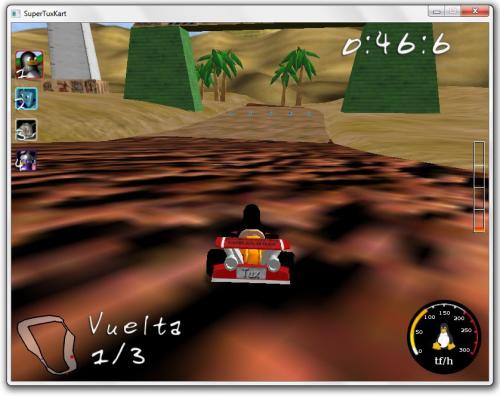

I was able to play supertuxkart and I didn’t notice any error. Passing identical vertices to OpenGL increases the number of per-vertex operations and could create a performance bottleneck in the rendering pipeline.Yes is working, but with some errors when using the xfce windows. The GL_QUADS version of this primitive, however, would require eight vertices, two of which are redundant. Rendered as a GL_QUAD_STRIP, your application would need to send only six unique vertices. You could render a two-quadrilateral GL_QUAD_STRIP primitive by using GL_QUADS, for example. In general, you should use these primitives when possible and practical to reduce redundant per-vertex computation. Note that GL_LINE_STRIP, GL_LINE_LOOP, GL_TRIANGLE_STRIP, GL_TRIANGLE_FAN, and GL_QUAD_STRIP all share vertices among their component line segments, triangles, and quadrilaterals.
#Opengl 2.1 supertuxkart manual
See the "gluTess" set of functions in OpenGL ® Reference Manual for more information. The GLU library supports polygon tessellation, which allows applications to render filled primitives that are nonconvex or self-intersecting, or that contain holes. If n is less than 3, OpenGL renders nothing.įor GL_QUADS, GL_QUAD_STRIP, and GL_POLYGON, all primitives must be both planar and convex. OpenGL renders an n-sided polygon, where n is the number of vertices specified by the application. GL_POLYGON Use GL_POLYGON to draw a single filled convex n-gon primitive. If n is less than 4, OpenGL renders nothing. If the application specifies n vertices, OpenGL renders ( n-2)/2 quadrilaterals. If the application specifies a sequence of vertices v, OpenGL renders a quadrilateral using v 0, v 1, v 3, and v 2 another quadrilateral using v 2, v 3, v 5, and v 4 and so on. GL_QUAD_STRIP Use this primitive to draw a sequence of quadrilaterals that share edges.

If n isn't a multiple of 4, OpenGL ignores the excess vertices. If the application specifies n vertices, OpenGL renders n/4 quadrilaterals. OpenGL renders a quadrilateral for each group of four vertices. GL_QUADS Use this primitive to draw individual convex quadrilaterals. If n is less than 3, OpenGL renders nothing. If the application specifies n vertices, OpenGL renders n2 connected triangles. If the application specifies a sequence of vertices v, OpenGL renders a triangle using v 0, v 1, and v 2 another triangle using v 0, v 2, and v 3 another triangle using v 0, v 3, and v 4 and so on. Each triangle shares the first vertex specified. GL_TRIANGLE_FAN Use this primitive to draw a fan of triangles that share edges and also share a vertex. OpenGL renders a triangle using the first, second, and third vertices, and then another using the second, third, and fourth vertices, and so on. GL_TRIANGLE_STRIP Use this primitive to draw a sequence of triangles that share edges. If n isn't a multiple of 3, OpenGL ignores the excess vertices. If your application specifies n vertices, OpenGL renders n/3 triangles. OpenGL renders a triangle for each group of three vertices.

GL_TRIANGLES Use this primitive to draw individual triangles. OpenGL renders this primitive like a GL_LINE_STRIP with the addition of a closing line segment between the final and first vertices. GL_LINE_LOOP Use this primitive to close a line strip. If the application specifies n vertices, OpenGL renders n1 line segments. OpenGL renders a line segment between the first and second vertices, between the second and third, between the third and fourth, and so on. GL_LINE_STRIP Use this primitive to draw a sequence of connected line segments. If n is odd, OpenGL ignores the final vertex. If the application specifies n vertices, OpenGL renders n/2 line segments. OpenGL draws a line segment for each group of two vertices. GL_LINES Use this primitive to draw unconnected line segments. OpenGL renders a point for each vertex specified. GL_POINTS Use this primitive type to render mathematical points. OpenGL interprets the vertices and renders each primitive using the following rules: OpenGL provides ten different primitive types for drawing points, lines, and polygons, as shown in Figure 2-1. The primitive type determines how OpenGL interprets and renders the sequence of vertices. In OpenGL, applications render primitives by specifying a primitive type and a sequence of vertices with associated data.


 0 kommentar(er)
0 kommentar(er)
